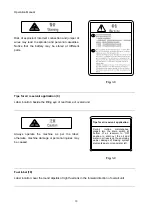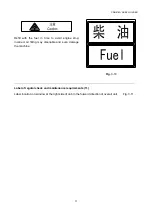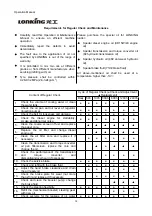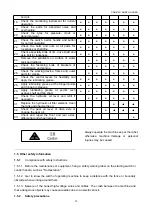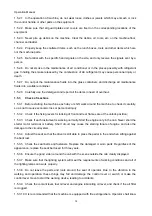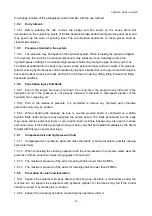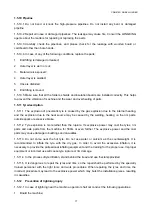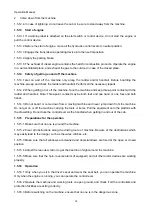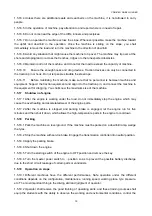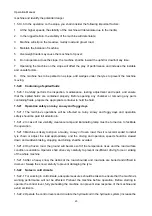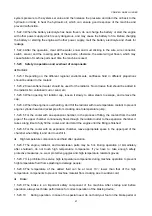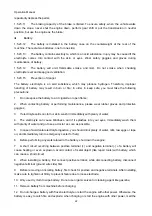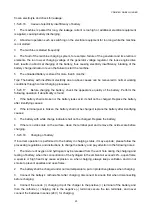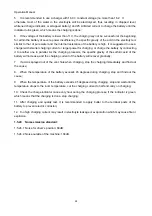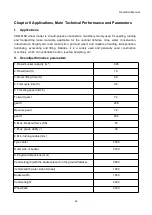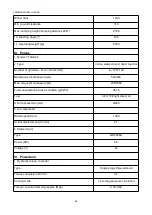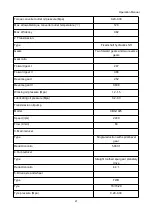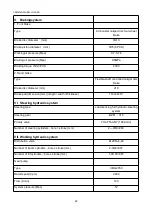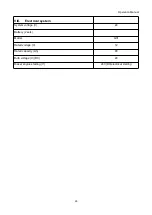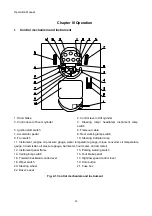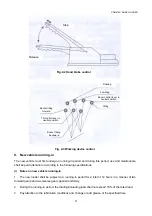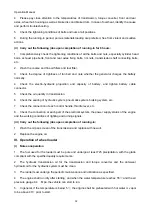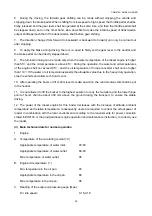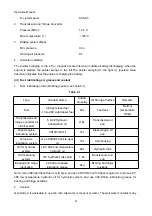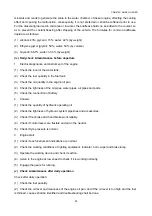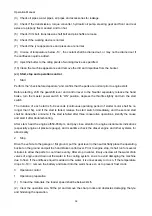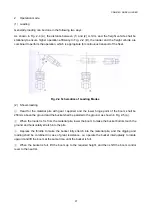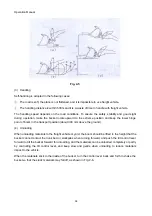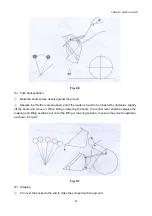
Operation Manual
24
5.
It is recommended to use a charger with 16.0 V constant voltage (no more than 16.2 V,
otherwise most of the water in the electrolyte will be electrolyzed, thus resulting in dropped level,
whitened charge indicator, or scrapped battery) and 25 A limited current to charge the battery until the
indicator turns green, which means the charging is done;
6.
If the voltage of the battery is lower than 11 V, the charging may not be successful at the beginning,
for within the battery of severe power insufficiency, the specific gravity of the acid in the electrolyte is
similar to that of pure water and the internal resistance of the battery is high. It is suggested to use a
charger with smaller charging current or larger power for charging, or charge the battery by connecting
it to another one in parallel. As the charging proceeds, the specific gravity of the sulfuric acid of the
battery will increase, and the charging current of the battery will recover gradually;
7.
If acid is sprayed out of the vent hole when charging, stop the charging immediately and find out
the cause;
8.
When the temperature of the battery exceeds 45 degrees during charging, stop and find out the
cause;
9.
When the temperature of the battery exceeds 45 degrees during charging, stop and wait until the
temperature drops to the room temperature, cut the charging current to half and carry on charging;
10. Check the charge indicator once every hour during the charging process; if the indicator is green,
which means that the charging is done, stop charging;
11. After charging and quality test, it is recommended to apply butter to the terminal posts of the
battery to prevent electric corrosion;
12. Too high charging current may result in electrolyte leakage or evaporation which may cause fire or
explosion.
1.5.24
Noise emission standard:
1.5.24.1 Noise for driver’s position: 88dB;
1.5.24.2 Noise outside of the machine: 104dB.

